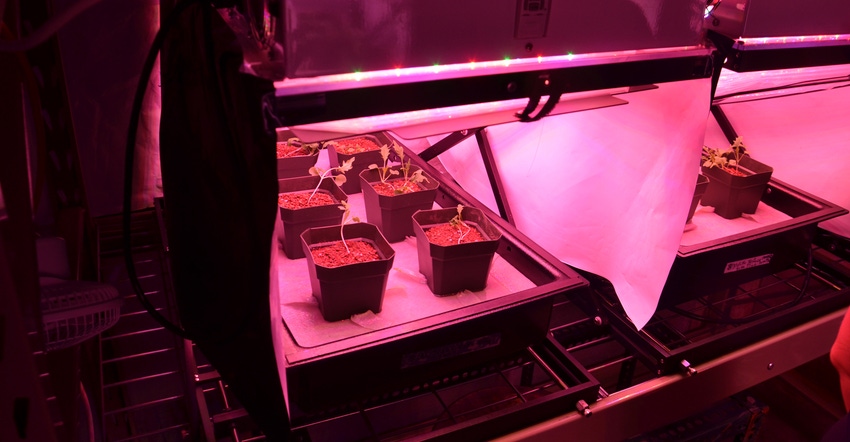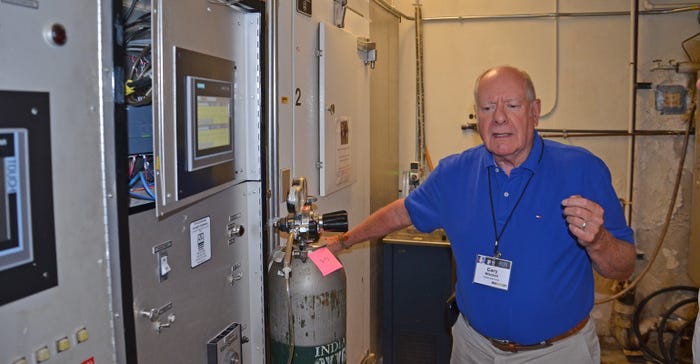
Cary Mitchell knows a thing or two about teaching and grooming students for life in the real world. He’s been doing research and teaching in Purdue’s Horticulture Department for 47 years. He also knows more than a little bit about growing plants.
In fact, Mitchell and his students through the years have learned how to grow specific plants in environments that mimic those found on the space station. He’s received numerous NASA grants through the years, as well as USDA grants, many of them for growing plants in controlled environments that could be used for food.
That’s why his growing environment is a small, cramped chamber rather than a greenhouse. The conditions his plants must grow in are like those they would encounter in space travel. Mitchell reproduces the conditions by controlling gas concentrations and humidity levels, and exposing plants to specific wavelengths of light that have been determined best for growing crops that will tolerate the unusual environment.
Mitchell explains that these plants grow in concentrations of 2,800 parts per million of carbon dioxide. Today, the level of carbon dioxide concentration for corn growing in Indiana is around 410 ppm. In the mid-1950s, it was about 260 ppm.
For plants Mitchell was growing when visitors from Purdue’s digital roundtable technology field day checked out his growth chambers, he maintained relative humidity at 45%.

CONTROLLED ENVIRONMENT: Cary Mitchell explains what it will be like inside the tiny growth chamber with a controlled environment before taking visitors inside.

“We’ve learned we can’t grow certain plants in conditions like those on the space station,” he says. “We experimented with Chinese cabbage, but it just won’t grow well.”
However, mizuna plants grow well in the carbon-dioxide-rich environment. Mizuna is a leafy green vegetable. Current plants that Mitchell is growing can be cut for food about 26 days after planting, and again at 56 days. Controlled-release fertilizer pellets provide nutrition for the plants.
Mitchell continues to test various fertilizer delivery systems and types of growth media to see which might be most beneficial for use in these controlled “out-of-this-world” environments.
About the Author(s)
You May Also Like




